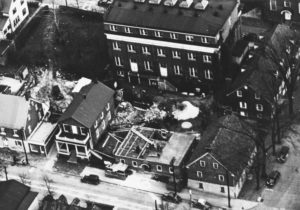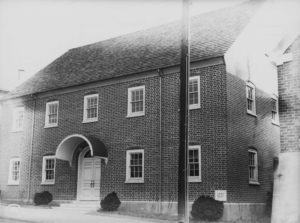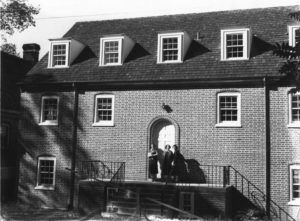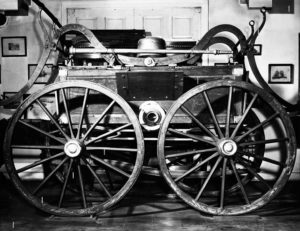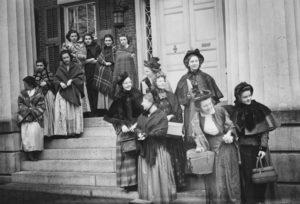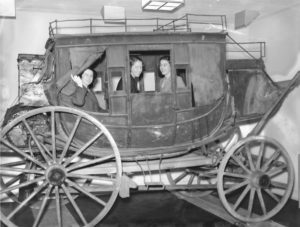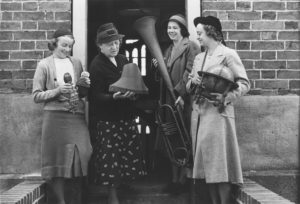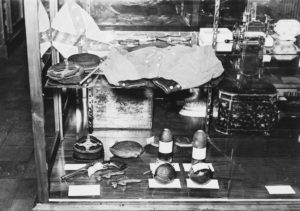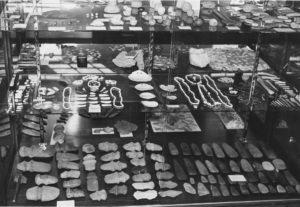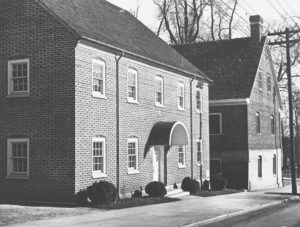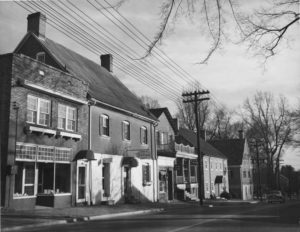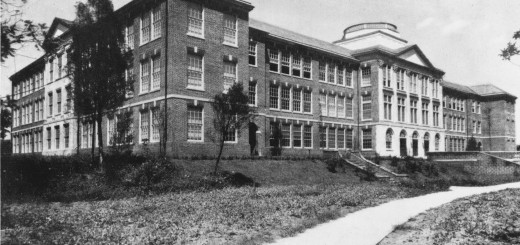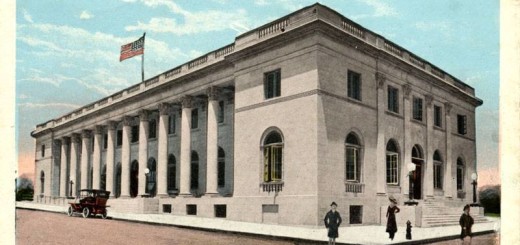On this day in 1937, the cornerstone of a new building in Salem was unveiled. The building under construction was an ambitious project for the Wachovia Historical Society and it was coming to fruition, witnessed by the attendees on this red-letter day.
The Hall of History was a fifty-one-by-thirty-seven-foot structure on South Main Street, built behind the Boys School. The purpose of the building was to house and display artifacts owned by the Wachovia Historical Society. It was considered an annex to the Wachovia Museum (the Boys School), where other Wachovia Historical Society artifacts were housed and displayed. The building cost $34,022.51, paid for by fundraising by the Wachovia Historical Society, minus $947.34 that was owed when the building was accepted by the city of Winston-Salem in October 1937.
The photo above shows the back of the building when it was under construction. Several organizations assisted the Wachovia Historical Society with the cataloging and marketing of the artifacts and exhibits, such as the Junior League and the Federal Writers Project.
The new building offered a larger display space for large exhibits, such as the old fire engine that was used by the Salem “Rough and Ready” volunteers. The fire engine was donated by the Winston-Salem fire department and was driven down the street to the museum in November 1937.
And in December 1937, the Hattie Butner stagecoach came out of storage and was driven down the street to the museum. But before it reached the museum, the stagecoach participated in a reenactment of the 1858 Christmas season at Salem Female Academy. Students in period-appropriate attire waited for the stagecoach on the steps of Main Hall, just as students did nearly 80 years before. After the stagecoach reached the museum, it became an exhibit that was enjoyed by people of all ages.
Junior League members assisted in moving the artifacts into the Hall of History. The WPA approved a project for the Hall of History that provided funds for assistants who helped with classification and arrangement of the museum exhibits. The Wachovia Historical Society also used a variety of consultants who offered professional advice to rearrange and catalog the exhibits. The goal was to open the museum by Easter (the middle of April), 1938. When the museum opened, more than 1,000 visitors registered their attendance.
Many individuals and school groups toured the Wachovia Museum and the Hall of History during their existence. It became apparent that the area known as “Old Salem” was undergoing many changes. See the view of South Main Street above. Eventually, an organization known as “Old Salem Inc.” began to look at the modernization and change taking place in “Old Salem,” which left unchecked would erase all vestiges of the Moravian town. So an effort was made to purchase remaining buildings, such as the Salem Tavern, so that they could be restored and preserved. The Wachovia Historical Society and Old Salem Inc. entered into an agreement in 1953 whereby Old Salem would operate the Hall of History and the Wachovia Museum, but all exhibits and artifacts would be property of the Wachovia Historical Society.
In 1972, Old Salem requested that the Hall of History be removed so that the play shed, wood shed, and garden behind the Boys School could be restored. This began a lengthy process of relocating the artifacts and Wachovia Historical Society records, as well as handling the legal matters involved. By December 24, 1985, the annex was removed.
Today, the lot where the Hall of History was located contains reconstructed outbuildings, and the Boys School has recently been renovated and is interpreted as a school.
Photographs courtesy of Forsyth County Public Library Photograph Collection.
Stay tuned for the next historical post on March 1st.

